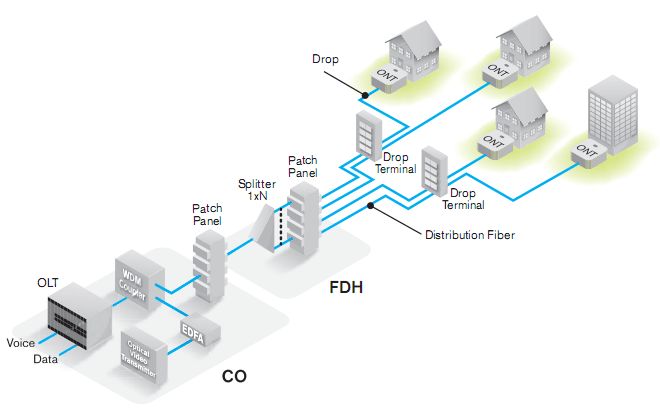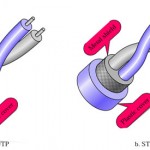For each of the required TIA and ISO structured cabling measurements, you will find troubleshooting tips to help quickly pinpoint the cause of failures when they occur. In some examples, you will find suggested reasons why the measurement does not fail in cases you would expect to see a failure.
| Wiremap | |
| Test Result | Possible Cause of Result |
| Open | Wires broken by stress at connections |
| Cables routed to wrong connection | |
| Wire is not punched down properly and does not make contact in the IDC | |
| Damaged connector | |
| Cuts or breaks in cable | |
| Wires connected to wrong pins at connector or punch block | |
| Application-specific cable (e.g. Ethernet using 1,2/3,6 only) | |
| Wires connected to wrong pins at connector or punch block | |
| Wires connected to wrong pins at connector or punch block | |
| Short | Improper connector termination |
| Damaged connector | |
| Conductive material stuck between pins at a connection Damage to cable | |
| Application specific cable (e.g. factory automation) | |
| Reversed pair | Wires connected to wrong pins at connector or punch block |
| Crossed pair | Wires connected to wrong pins at connector or punch block |
| Mix of 568A and 568B wiring standards (1,2 and 3,6 crossed) | |
| Crossover cables used (1,2 and 3,6 crossed) | |
| Split pair | Wires connected to wrong pins at connector or punch block |
| Length | |
| Open | Possible Cause of Result |
| Length exceeds limits | Cable is too long – check for coiled service loops and remove in this case |
| NVP (nominal Velocity of Propogation) is set incorrectly | |
| One or more pairs significantly shorter | Intermediate break in the cable |
| NVP is set incorrectly | |
| One or more pairs significantly shorter | Damage to cable |
| Bad connection | |
| Note: Standard practices dictate that the cabling length be defined by the length of the shortest pair. NVP varies per pair, meaning each pair could be reported with a different length. These two conditions can result in a cable with three of four pairs over the length limit, yet the link result is a PASS (e.g. a channel with 101, 99, 103, 102 meters for the four pairs). A PASS in this case is the correct interpretation. | |
| Delay/Skew | |
| Open | Possible Cause of Result |
| Exceeds limits | Cable is too long – Propagation Delay |
| Cable uses different insulation materials on different pairs – Delay Skew |
| Insertion Loss (Attenuation) | |
| Open | Possible Cause of Result |
| Exceeds limits | Excessive length |
| Non-twisted or poor quality patch cables | |
| High impedance connections – Use time domain techniques to troubleshoot | |
| Inappropriate cable category – e.g. Cat 3 in a Cat 5e applications | |
| Incorrect autotest selected for cabling under test |
| NEXT and PSNEXT | |
| Open | Possible Cause of Result |
| FAIL or PASS* | Poor twisting at connection points |
| Poorly matched plug and jack (Category 6/Class E applications) | |
| Incorrect link adapter (Cat 5 adapter for Cat 6 links) Poor quality patch cords | |
| Bad connectors | |
| Bad cable | |
| Split pairs | |
| Inappropriate use of couplers | |
| Excessive compression caused by plastic cable ties Excessive noise source adjacent to measurement | |
| Unexpected PASS | Knots or kinks do not always cause NEXT failures, especially on good cable and far removed from the ends of the link |
| Incorrect autotest selected (e.g. “Bad” Cat 6 link tested to Cat 5 limits) | |
| “Fails” at low frequency on NEXT graph but passes overall. When using the ISO/IEC standards, the so called 4dB rule states all NEXT results measured while insertion loss <4dB cannot fail |
| Return Loss | |
| Open | Possible Cause of Result |
| FAIL or PASS* | Patch cord impedance not 100 ohms |
| Patch cord mishandling causes changes in impedance | |
| Installation practices (untwists or kinks of cable – the original twists should be maintained as much as possible for each wire pair) | |
| Excessive amount of cable jammed into the Telecom Outlet box | |
| Bad connector | |
| Cable impedance not uniform | |
| Cable not 100 ohm | |
| Impedance mismatch at junction between patch cable and horizontal cable | |
| Poorly matched plug and jack | |
| Use of 120 ohm cable | |
| Service loops in telecommunications closet Inappropriate autotest selected | |
| Defective link adapter | |
| Unexpected PASS | Knots or kinks do not always cause return loss failures, especially on good cable and far removed from the ends of the link |
| Incorrect autotest selected (easier to pass RL limits) | |
| “FAILs” at low frequency on RL graph but passes overall. Due to the 3 dB rule, whereby all RL results measured while insertion loss <3 dB cannot fail |
| ACR-F and PS ACR-F | |
| (older names: ELFEXT and PSELFEXT) | |
| Open | Possible Cause of Result |
| Possible Cause of Result | General rule: troubleshoot NEXT problems first. This normally corrects any ACR-F (ELFEXT) problems |
| Service loops with many tightly coiled windings |
| Resistance | |
| Open | Possible Cause of Result |
| FAIL or PASS* | Excessive cable length |
| Poor connection due to oxidized contacts | |
| Poor connection due to marginally attached conductors Thinner gauge cable | |
| Incorrect patch cord type |









